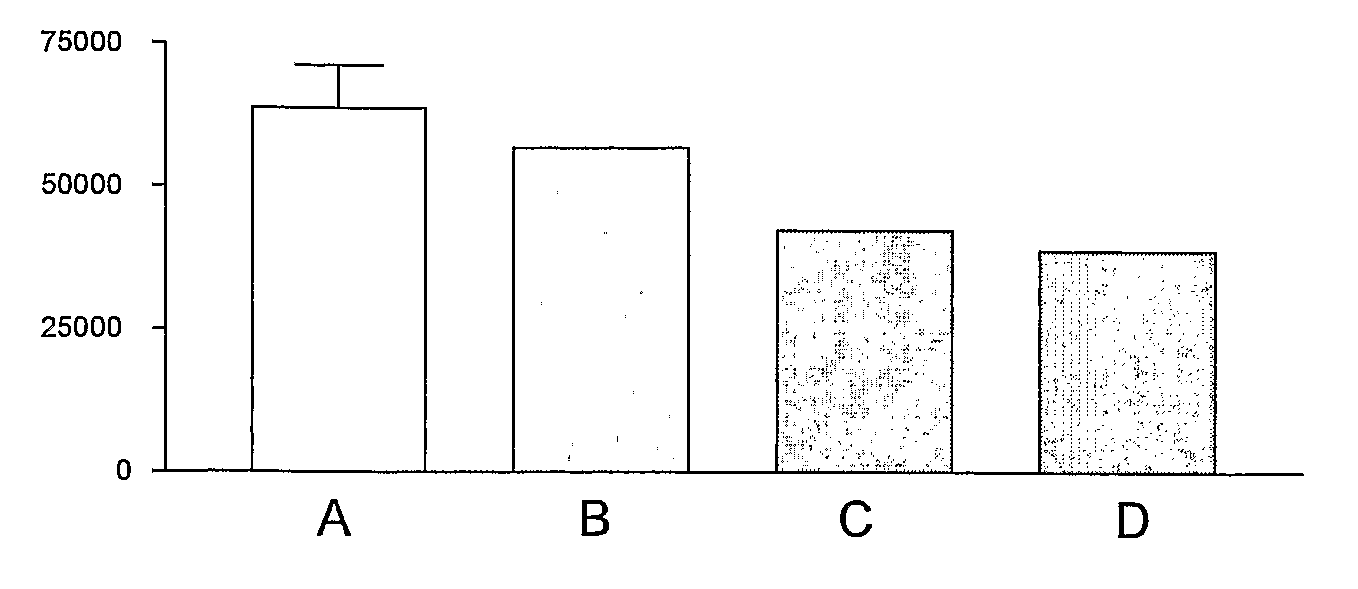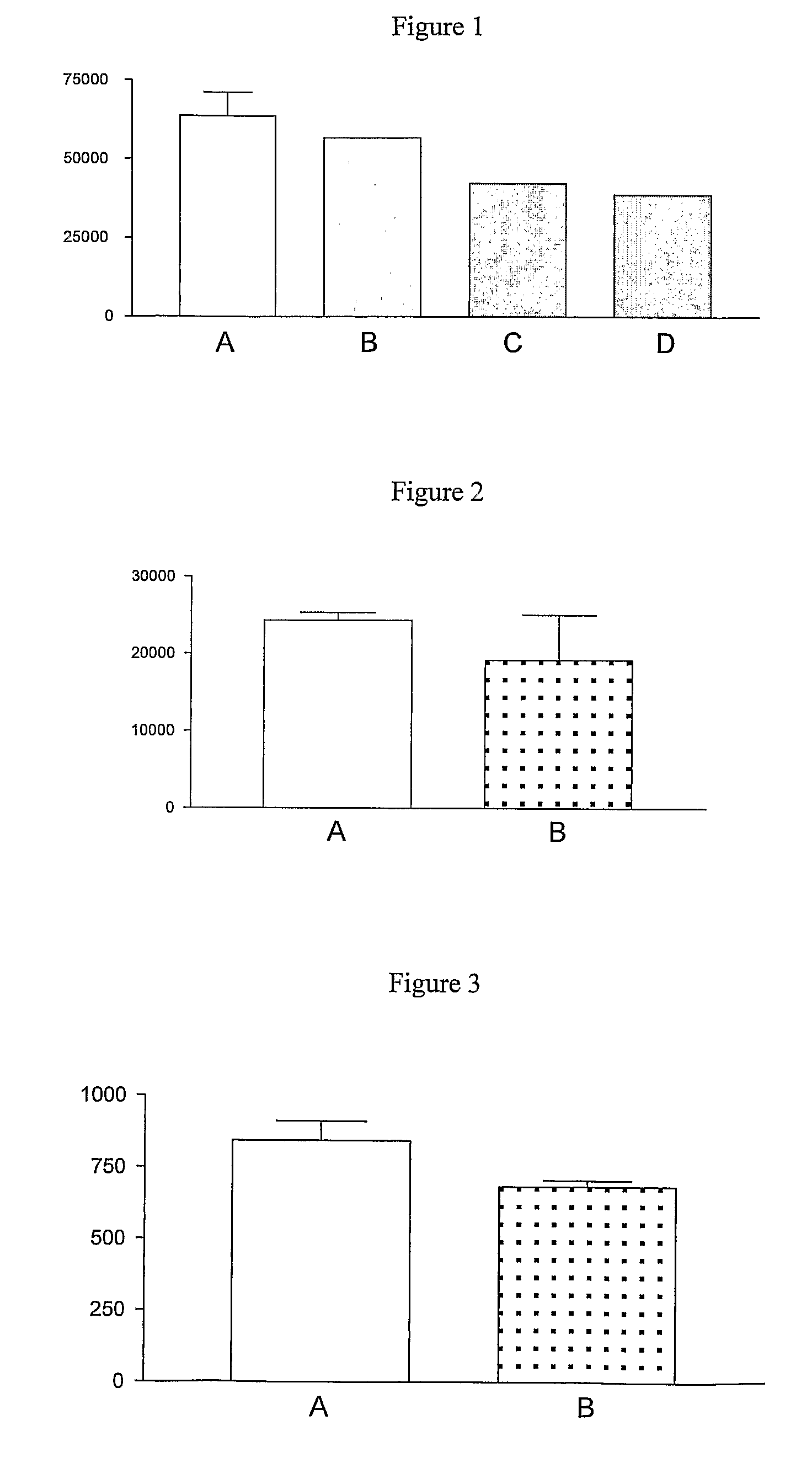Assay for measuring asymmetric methylarginine in a biological sample
- Summary
- Abstract
- Description
- Claims
- Application Information
AI Technical Summary
Problems solved by technology
Method used
Image
Examples
example 1
[0068]Macrophages (J774 cells) were stimulated with a cytokine cocktail (LPS / IFN / TNF) for 24 h, to induce iNOS expression, and cell lysates were collected. The induction of iNOS was confirmed by measurement of NOx generation in culture media. Low molecular weight molecules were removed from lysates using 30000 MW cut-off filters. Lysates were incubated on 3000 MW filters with [14C]L-NMMA for 15 min (∀ 1:M L-NMMA), washed 3× with cold TRIS buffer and filters counted.
[0069]These preliminary studies indicated that the [14C]-NMMA bound to NOS and that this could be competed out by excess 1000-fold L-NMMA (FIG. 1). There are issues for binding [14C]L-NMMA to cell lysates which also contain DDAH therefore it was decided to use a recombinant bacterial NOS.
example 2
[0070]A bacillus subtilis nitric oxide synthase oxygenase domain (“fragment”) was PCR amplified from genomic DNA with Nde1 and BamH1 sites added at the 5′ and 3′ ends respectively and cloned into pET15b vector. The bsNOS fragment corresponded to SEQ ID NO: 2 and was purified as previously described (Pant et al., Biochemistry; 2002; 41:11071-11079).
example 3
[0071][14C]L-NMMA (3.75 nmol) was incubated with the bsNOS fragment (10 μmol) on 30000 MW cut off filters in the presence and absence (Control) of 1000-fold excess unlabelled L-NMMA. These preliminary studies indicated that the [14C]-NMMA bound to NOS and that this could be competed out by excess 1000-fold L-NMMA (FIG. 2).
PUM
 Login to View More
Login to View More Abstract
Description
Claims
Application Information
 Login to View More
Login to View More - R&D
- Intellectual Property
- Life Sciences
- Materials
- Tech Scout
- Unparalleled Data Quality
- Higher Quality Content
- 60% Fewer Hallucinations
Browse by: Latest US Patents, China's latest patents, Technical Efficacy Thesaurus, Application Domain, Technology Topic, Popular Technical Reports.
© 2025 PatSnap. All rights reserved.Legal|Privacy policy|Modern Slavery Act Transparency Statement|Sitemap|About US| Contact US: help@patsnap.com



